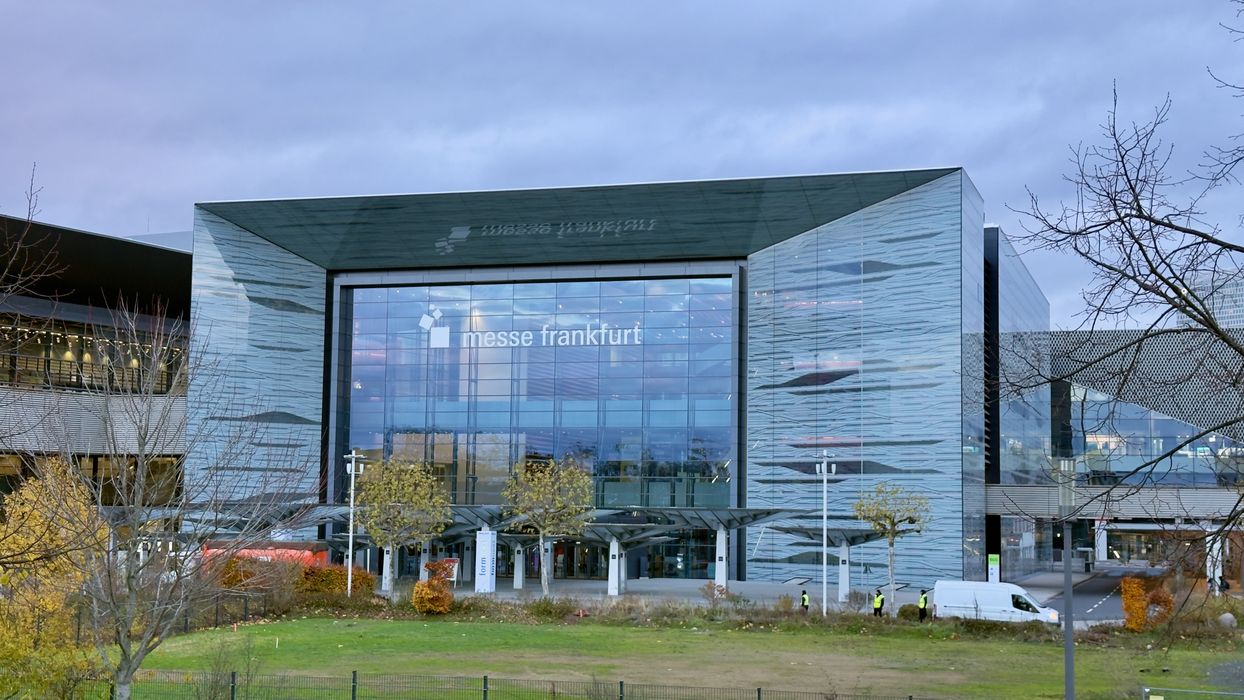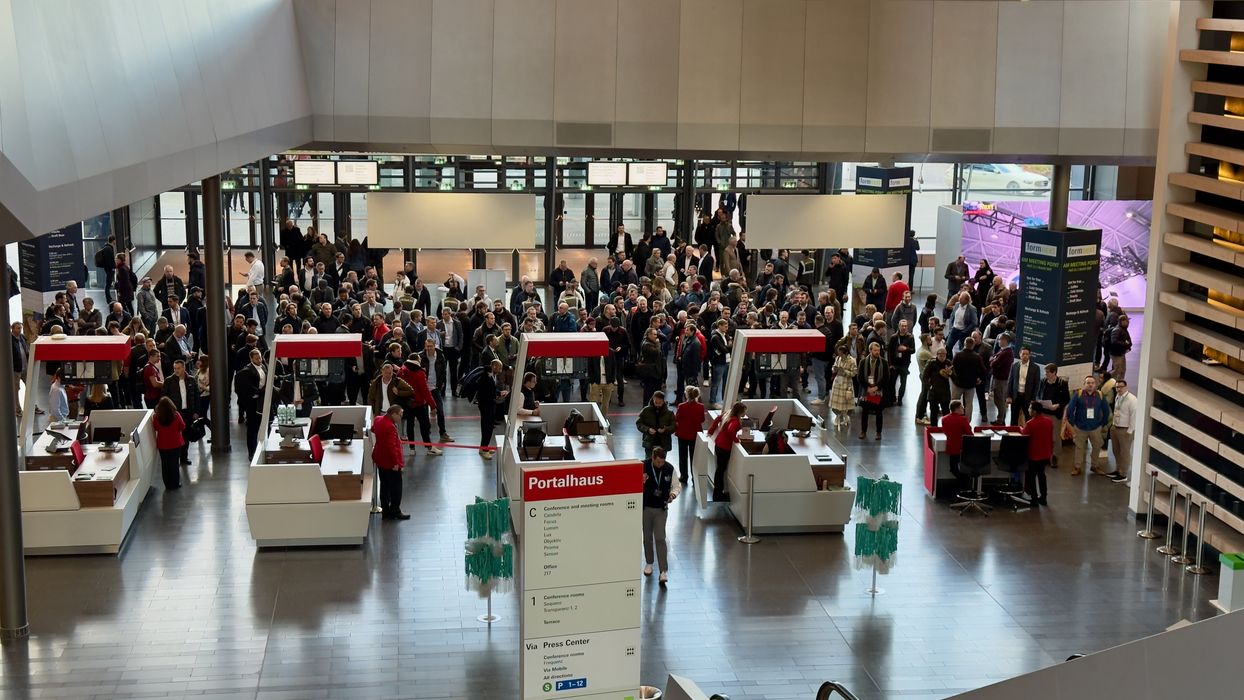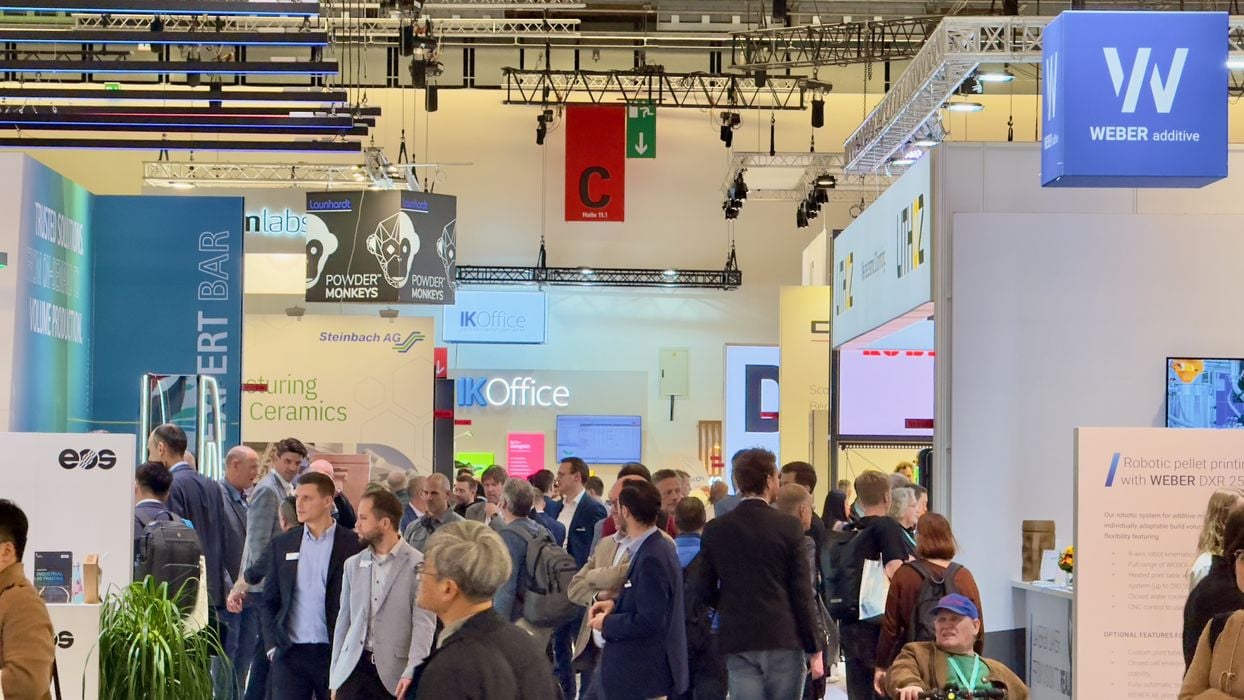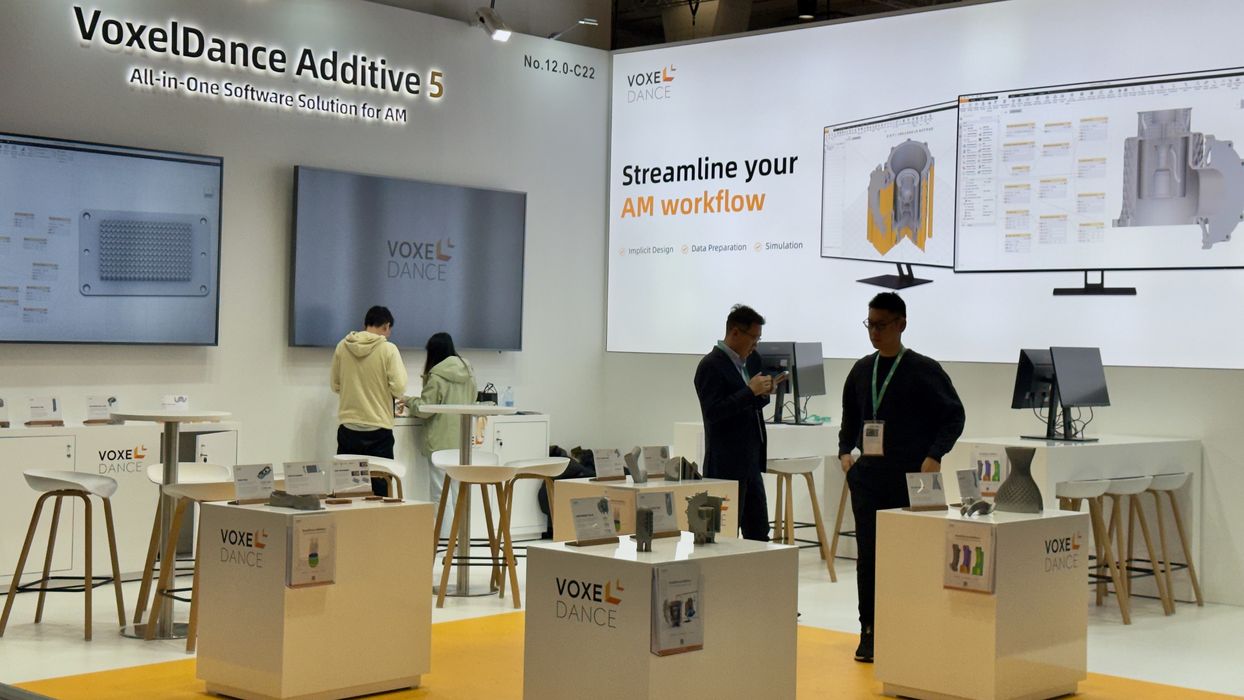
Formnext 2024 has concluded, and I have some thoughts.
The event, which, as always takes place in the massive Messe complex in Frankfurt, Germany, is by far the largest 3D print event on the planet. This year, as we were told by the fellow in charge of the event, there were 864 exhibitors. I believe this is at or close to the highest ever. In addition, the attendee traffic was quite high, and while I haven’t seen any specific figures yet, it could very well be the most-attended 3D print event, ever.
However, all is not roses.
3D Print Industry Challenges

As we travelled the endless halls we noticed something we hadn’t seen in previous events: empty spaces. One hall was short a couple of rows, and there were plenty of spaces containing convenient seating, instead of a paying exhibitor.
But how could there be the same number of exhibitors with less space taken up? The answer is clear: the exhibitors were taking up less space.
This was confirmed as we saw numerous exhibitors in tiny spots, where in previous years they had huge displays. Even established companies were reduced to tiny desk-sized spots within a government-sponsored area.
Evidently a huge number of participants were not able or willing to pay for full spots. In fact, there were quite a number of exhibitors that didn’t appear at all. Raise3D, for example, wasn’t exhibiting. A discussion with their representatives revealed they’ve changed their strategy to participate only every second year.
But others were merely absent. The most notable was Nexa3D. The company had, according to the official Formnext floor plan, a gigantic spot similar to Stratasys or other notable companies.
They didn’t show up. Apparently they had cancelled their reservation a couple of weeks earlier. But why? There is no official answer, but we heard from multiple parties that Nexa3D may no longer be in business, and that bankruptcy is in the wind. The company’s CEO was seen at the event, but in the role of CEO of QuickParts, apparently.
What does all of this mean? It is simply that many companies in the 3D space are incurring extreme financial stress. The story we repeatedly heard was that a) interest rates in the US are keeping companies from buying equipment, and b) European automakers are in a bad state, likely due to their reluctance to transition to EVs. They aren’t buying much, and that cascades to many other industries.
This all contributed to a somewhat gloomy outlook over the fair. However, there were multiple bright spots, as we spoke to several companies that appeared to be doing quite well.
How are they doing it? There were a couple of themes heard repeatedly.
Succeeding In 3D Printing

One was that they were self-funded and did not take VC money. They built their companies by bootstrapping, and continue to be in good financial shape. However, they often said they have trouble raising funds for their successful operation because investors have soured on the entire industry — even though some players are actually good investments. VCs often have very different goals than company founders, and it’s sometimes the case that misalignment occurs.
The other story was heard over and over: defense. When asking companies which industries were buying their products, “defense” was usually in the top two responses. Some companies seem to have completely switched over to military clients. This is perhaps good for the companies, but a disturbing statement of the state of today’s planet Earth.
A third story heard was a focus on applications. Multiple successful companies we spoke with were using a somewhat different approach to marketing. Instead of trying to sell the machine, they were selling the application. In other words, they would work intimately with a client for a longer period, sometimes years, to perfect a combination of hardware, software, procedures, materials and financial aspects for the production of a specific part. In almost every case, the client then went on to purchase copious quantities of equipment and materials from the manufacturer.
This should be the model for other 3D printer manufacturers going forward; selling a machine on its specs alone doesn’t cut it. One wise participant explained to us this:
“It’s harder to sell 3D printers now than it was years ago, mostly because the customers are a lot smarter.”
The customers are no long enamored with the notion of “having a 3D printer” as they once were. Instead, they just want their part in the best way possible.
East vs. West in 3D Printing
A theme we saw throughout the event was a clash between East and West. The West, the originators of the technology, have long refined their technological capabilities. The East, however, have caught up in many areas and can now offer often equivalent solutions at much lower cost.
This has shown up in dimensions across 3D printing, from hardware to materials to software.
At the show, for example, we saw how Prusa Research announced a surprise CoreXY machine, clearly intended to compete against similar machines from their rivals. More details about this later. Many Asian stands at Formnext were noticeably larger than previous years, and many Western stands were noticeably smaller. We saw countless LBPF metal 3D printer manufacturers from China that we’d never seen previously.

Is the East winning? Not always. During the show there was a German police and customs authorities raid on the VoxelDance stand. They were accused of copying advanced 3D software code by at least two Western companies. The authorities spoke to VoxelDance representatives and apparently confiscated some materials as evidence.
Aside from the financial struggles, there was, as one would expect in this environment, limited innovation from the big players. Among the million press releases we received before the event, many simply announced a new material, a new reseller or even a new executive hire. To be clear, there were a few new machines announced, and we’ll write about them in coming days.
Most of the truly innovative stuff was found at smaller startups, and there was indeed several incredibly interesting concepts I can’t wait to write about this week.
Formnext was still a very interesting event with plenty of news; it was just more corporate and technologically subdued than in the wild, cash-rich days of the past.
